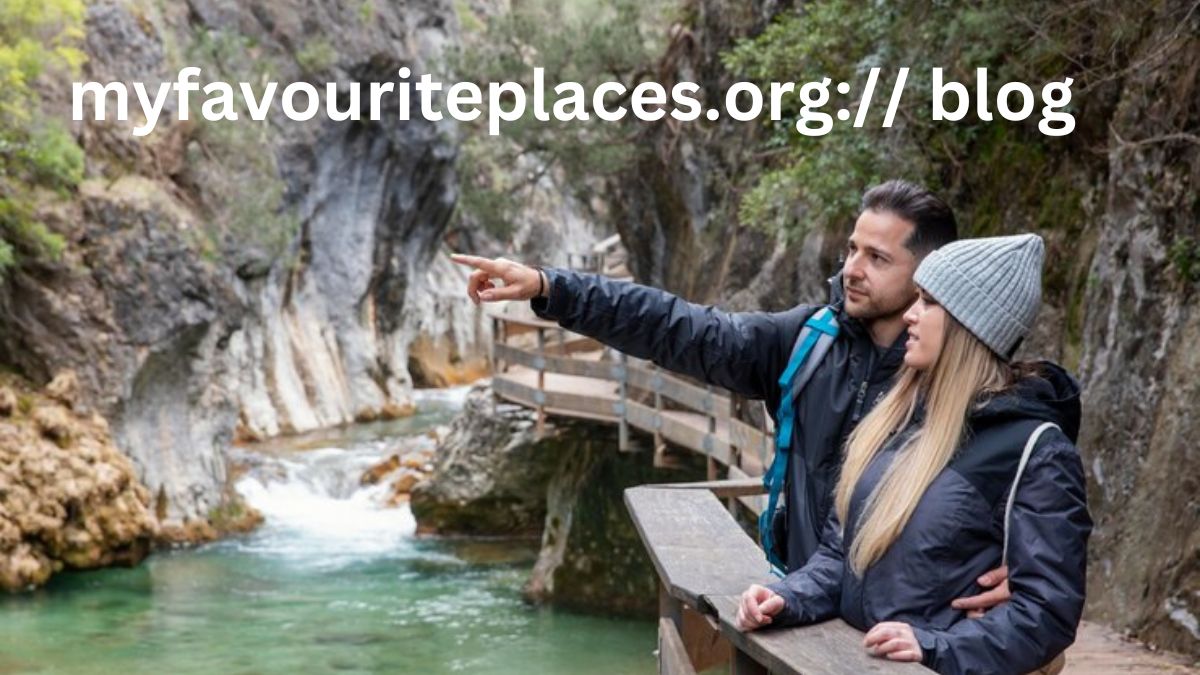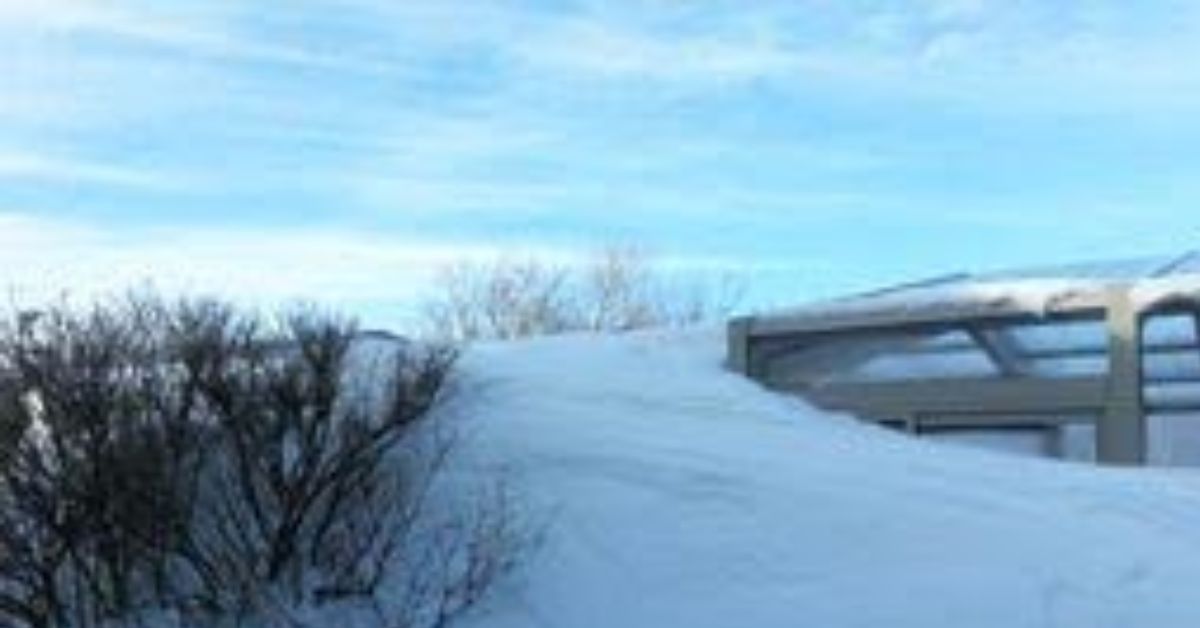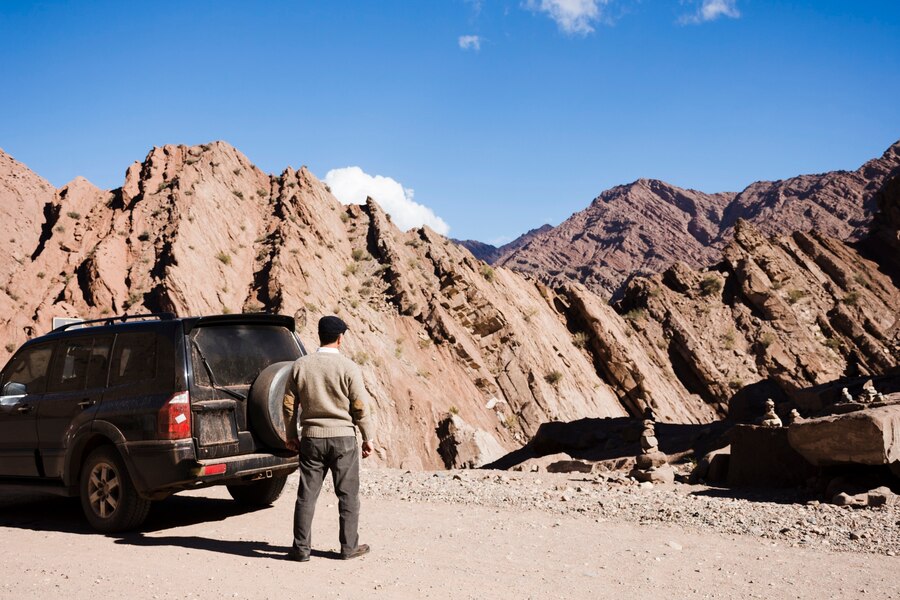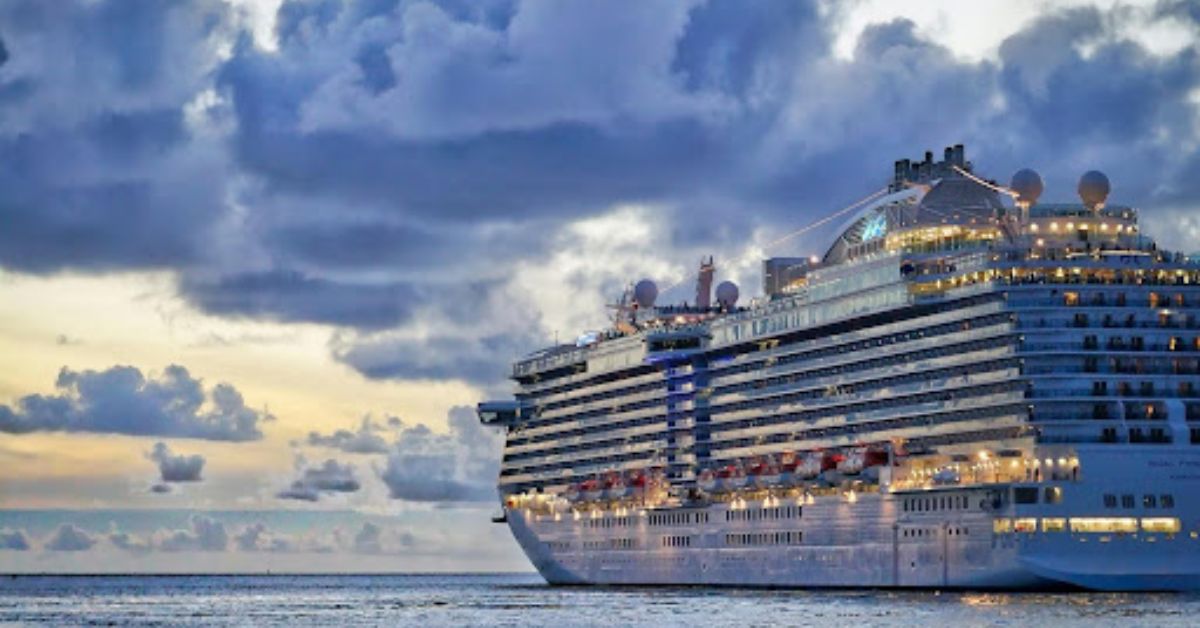TRAVEL
Exploring the World of Blogging on myfavouriteplaces.org:// blog

Blogs detailing users’ favorite vacation spots, adventures, and insider insights may be found on myfavouriteplaces.org. Everyone may share their love of travel and find others who share their enthusiasm.
Exploring the Concept of Blogging
In recent years, blogging has exploded in popularity as a platform for individuals to express themselves, share knowledge, and even make a living. It entails consistently posting material about a certain subject or niche, typically written in an informal language, with the goal of engaging and informing readers.
Importance of Blogging for Businesses
Businesses can’t do without blogging if they want to get found online, draw in consumers, and become experts in their field. As a result, the website’s search engine rankings rise, more people visit the site, and consumers get useful information.
Benefits of Having a Blog on myfavouriteplaces.org:// blog
Posting blog entries to myfavouriteplaces.org has several advantages, such as:
- Promotion targeting a certain demographic of vacationers
- Connections with other bloggers and tourists
- Raised profile and familiarity with the brand
- Possibility to have access to insightful analytics
- Possible partnerships with travel-related brands and businesses
How to Start a Blog on myfavouriteplaces.org:// blog
There is no rocket science involved in creating a blog on myfavouriteplaces.org:// blog. Here are the necessary steps to begin:
- Visit myfavouriteplaces.org and create an account.
- Pick a catchy and distinctive name for your blog’s domain.
- Think about your hobbies and strengths in relation to potential niches or topics.
- Make your blog stand out from the crowd by giving it a unique look and feel.
- Get your audience hooked by making and sharing captivating content.
Choosing the Right Niche for Your Blog
Think about what you’re good at, what interesting, and what you’re passionate about when deciding on a blog niche. Pick something you really know your stuff on and would love to tell other people about. In doing so, you will solidify your position as an expert in your field and draw in a loyal following.
Creating Engaging Content for Your Blog
Producing material that is both educational and interesting will keep readers interested and coming back for more. To engage a wide range of learners, use many media kinds (articles, photographs, videos, infographics, etc.).
Utilizing SEO Techniques for Better Visibility
If you want more people to see your blog and read its content, you need to make sure it’s search engine optimized. To boost your blog’s search engine rating, make use of important keywords, optimize the meta tags and descriptions, and build high-quality backlinks.
Promoting Your Blog Effectively
In order to draw in readers and expand your audience, promotion is essential. Promote your blog and attract new audiences through social media, email, guest posts, and possibilities for cooperation.
Building a Community Around Your Blog
If you want your readers to be active and devoted, you need to create a community around your site. Pose questions, surveys, and competitions to get people talking, and don’t be shy about responding to comments and criticism.
Monetization Options for myfavouriteplaces.org:// blog Bloggers
If you own a blog on myfavouriteplaces.org:// blog, you may make money in a number of ways:
- Placing advertisements from ad networks such as Google AdSense
- Engaging in sponsored content and affiliate marketing partnerships with travel brands
- Marketing and selling information in digital form, including books, courses, and travel guides
- Providing premium memberships that provide access to premium material and other benefits.
Tips for Successful Blogging on myfavouriteplaces.org:// blog
Here are some things you can do to be a successful blogger on myfavouriteplaces.org:
- Maintain regularity in when you publish.
- Consistently interact with your target market
- Never stop learning and growing as a writer and content creator
- Keep up with the latest news and trends in your field
- Work along with other influential people and blogs in your field.
Case Studies of Successful myfavouriteplaces.org:// blog Bloggers
Read up on the methods, techniques, and best practices of popular bloggers on myfavouriteplaces.org:// blog. If you want to improve your own site by mimicking their promotion, content creation, and revenue practices, you should study their work.
Overcoming Common Challenges in Blogging
When you’re committed and persistent, you can conquer typical blogging challenges like writer’s block, low motivation, and technological difficulties. Keep your eye on the prize, try out some fresh ideas, and surround yourself with encouraging bloggers.
Conclusion
My Favorite Places is a great location to start a blog where you can talk about your travels, meet other people who share your interests, and maybe even make some money. If you want to start a blog that people will love reading and that will help them learn new things, follow the advice in this post.
FAQ’s
1. Can anyone start a blog on myfavouriteplaces.org:// blog?
Yes, myfavouriteplaces.org:// blog welcomes everyone to create an account and begin blogging.
2. How often should I post on my blog?
Posting at regular intervals, whether weekly, biweekly, or monthly, is recommended.
3. Can I make money from my blog on myfavouriteplaces.org:// blog?
Yes, myfavouriteplaces.org:// blog offers bloggers a number of ways to make money, such as advertising, sponsorships, and digital product sales.
4. How can I attract more readers to my blog?
Use tools like social networking, email, guest writing, and partnerships to spread the word about your blog.
5. What topics can I blog about on myfavouriteplaces.org?
Your travel blog can include a variety of subjects, from location guides and travel recommendations to anecdotes and adventure stories.

TRAVEL
Pool Enclosures for Winters with Snow: A Complete Guide

“Durable pool enclosures for winters with snow by Covers In Play, ensuring year-round pool protection”
Winter brings snow, chilly winds, and freezing temperatures, but your pool doesn’t have to suffer. Enclosing snow would do the job perfectly to protect your pool but also gives extended usability throughout the year. Not only do these structures keep your pool under cover against bad weather, but they also reduce maintenance costs, improve energy efficiency, and offer an inside place for you to stay cozy, even in the coldest month of the year. Let’s discover why it is the best option to invest in a pool cover during snowy winters.
Why Are Pool Enclosures for Winters with Snow Essential?
Pool care can prove to be quite challenging when the first flakes of snow start falling. Pool enclosures for winter with snow are essential because now their constructions offer protective guard against heavy snow loads and freezing temperatures with the best guarantees that the pool remains clean and operational. Such enclosures significantly reduce pool cleaning because of snow and other types of debris, including ice, getting into the pool.
Some solid pool enclosures act as an insulator, holding heat and lessening energy costs, thus keeping the temperature of the pool water. Hence, these enclosures become eco-friendly while bringing enjoyment in the elegant pool even in winter’s harshness.

“High-quality pool enclosures for winters with snow by Covers In Play, designed to withstand harsh weather”
How Pool Enclosures Protect Against Snow Damage
Snow and ice could do some serious damage to an open pool. The extra weight of stored snow may break pool covers or even damage the walls of the pool. Pool enclosures are designed for snowy winters to fight heavy loads of snow, keeping your pool safe from the effects of the weather.
Most of such enclosures are built using high-quality materials like aluminum frames and polycarbonate panels, adding strength and durability to the enclosures. Further, the coverage will not allow ice formation on the surfaces of the pool, bringing it to cracks or leaky surfaces.
Different Types of Pool Enclosures for Winters with Snow
1. Fixed Pool Enclosures
Contrary to the mobile structures which protect swimming pools during certain periods, fixed enclosures are permanent structures that offer year-round protection. They are durable structures usually designed to withstand heavy snow loads. A fixed enclosure will guarantee that the pool remains warm and secure during winters with heavy snows.
2. Retractable Pool Enclosures
Retractable pool enclosures would give the best flexible solution as it allows users the option of opening or closing the entire enclosure at their own discretion.
3. Dome-Shaped Enclosures
Dome-shaped enclosures are ideal for areas with heavy snow as their curved design prevents snow accumulation. The snow slides off the surface reducing the risks of structural damage.
Advantages of Pool Enclosures for Snowy Winters
1. Reduced Maintenance
Cleaning can be very tedious during winter with all the snow and debris around a pool. Therefore, pool enclosures greatly reduce the frequency of cleaning the pool because they keep out unwanted elements.
2. Energy Efficiency
Pool enclosures keep heat in, which reduces the amount of heating the pools require. Hence, they help save energy and cut utility bills during the winter season.
3. Increased Pool Use
A pool enclosure allows enjoyment of one’s swimming during all seasons regardless of the outside weather condition. Heated pool enclosures warm a space that you can enter easily during cold snowy winters.
4. Safety and Privacy
Enclosures are a barrier that keeps children and pets from accidentally falling into the pool. Equally, enclosures create privacy, providing a comfortable and secluded area.
How to Choose the Best Pool Enclosures for Winters with Snow
Material Strength and Durability
When choosing a particular pool enclosure, ensure that it is built using high-quality materials like aluminum and polycarbonate. These materials are lightweight yet strong enough to sufficiently handle heavy snow loads.
Customization Options
Most manufacturers offer designs that can be customized according to the dimensions of your pool and aesthetic needs. This way, you can have an enclosure that fits perfectly with the style you prefer while being functional.
Insulation and Heating
Going for winter use will require you to opt for enclosures with good insulation and also availing heating systems at integration. Your pool will thus be warm and comfortable even in frigid conditions.
Maintaining Pool Enclosures During Snowy Winters
Regular maintenance of your pool enclosure ensures that it lasts long. In order to do so, you need to Clear the panels. Whenever the panels to be kept clear are kept clean, sunlight can pass as maximum as possible through the panels.
Though these are a few tips for maintaining a pool, remember that well-built enclosures don’t require snow removal and eliminate the need to check for damages. If you’re struggling to find the right business to help you build high-quality, long-lasting enclosures, Covers In Play is one of the best options in town.
FAQs About Pool Enclosures for Winters with Snow
- Can pool enclosures handle heavy snowfall?
Yes, high-quality pool enclosures are designed to withstand heavy snow loads. Dome-shaped and fixed enclosures are particularly effective in snowy regions. - Do pool enclosures keep the water warm during winter?
Pool enclosures trap heat and can be equipped with heating systems to maintain warm water temperatures even in freezing conditions. - Are pool enclosures customizable for any pool size?
Most manufacturers offer customizable options to fit pools of all shapes and sizes, ensuring a perfect fit for your needs. - Do pool enclosures increase property value?
Yes, a well-designed pool enclosure can enhance your property’s appeal and value by extending the usability of the pool. - Where can I find reliable pool enclosure manufacturers?
Reputable manufacturers like Covers in play offer a range of high-quality options for snowy winters.
Conclusion
Pool enclosures for winters with snow are an invaluable addition to any pool owner’s setup. They protect your pool from harsh weather, reduce maintenance, and extend usability throughout the year. Whether you choose a fixed, retractable, or dome-shaped enclosure, the benefits far outweigh the investment.
By taking the time to select the right enclosure and maintaining it properly, you can enjoy a warm, inviting pool even during the coldest months. Protect your pool and enhance your winter experience by investing in a durable and efficient pool enclosure today.
TRAVEL
Exploring Garakpass Kelardasht: A Hidden Gem in Northern Iran

Garakpass Kelardasht, nestled in the heart of Mazandaran province in northern Iran, is a mesmerizing destination that offers an unparalleled blend of natural beauty, adventure, and tranquility. Known for its pristine landscapes, lush forests, and serene atmosphere, this hidden gem is an ideal getaway for nature lovers, hikers, and anyone seeking a break from the hustle and bustle of city life. In this article, we delve into everything you need to know about Garakpass Kelardasht, from its geographical significance to travel tips and highlights.
The Allure of Garakpass Kelardasht
Where is Garakpass Kelardasht?
Situated in the Alborz mountain range, Kelardasht is a small town in Mazandaran province, renowned for its picturesque valleys and vibrant ecosystem. Garakpass, located near this charming town, acts as a gateway to some of the most breathtaking vistas in the region. This area is accessible via scenic routes that pass through dense forests, mountain trails, and quaint villages, making the journey just as captivating as the destination.
A Natural Wonderland
Garakpass Kelardasht is synonymous with unspoiled nature. The region boasts verdant forests filled with oak, maple, and hornbeam trees, which create a stunning contrast against the rugged mountain peaks. The air here is refreshingly crisp, enriched with the earthy aroma of the forest floor. Wildlife enthusiasts will also find this area teeming with native species of birds and small mammals, providing ample opportunities for observation and photography.
Top Attractions Near Garakpass Kelardasht
1. Valasht Lake
One of the most iconic landmarks near Garakpass is Valasht Lake, a serene body of water surrounded by mountains and forests. The lake offers activities such as boating, picnicking, and birdwatching. Its reflective surface, especially during sunrise and sunset, creates a magical atmosphere that draws photographers and nature lovers alike.
2. Abbasabad Forest
Located a short drive from Garakpass, Abbasabad Forest is a UNESCO World Heritage Site known for its ancient trees and biodiversity. Visitors can explore winding trails, discover hidden waterfalls, and enjoy the calming sounds of nature.
3. Kandelus Village
Kandelus is a traditional village near Kelardasht that offers a glimpse into the local culture and heritage. The village is famous for its handicrafts, including handmade rugs, pottery, and embroidered fabrics, making it a great place for souvenir shopping.
Activities to Enjoy in Garakpass Kelardasht
Hiking and Trekking
With its rugged terrain and well-marked trails, Garakpass is a haven for hikers and trekkers. Popular trails range from beginner-friendly paths to challenging routes that lead to panoramic viewpoints.
Camping
For those who wish to immerse themselves fully in nature, camping in Garakpass is a must. Several designated camping spots provide safe and scenic locations to pitch a tent under the starry sky.
Photography
From vibrant wildflowers to snow-capped peaks, Garakpass Kelardasht offers endless opportunities for photography enthusiasts. Whether you’re capturing landscapes or close-up shots of flora and fauna, this region promises stunning visuals.
Best Time to Visit
The ideal time to visit Garakpass Kelardasht depends on your preferences:
- Spring (March to May): Witness the region come alive with blooming flowers and lush greenery.
- Summer (June to August): Enjoy pleasant temperatures and clear skies, perfect for outdoor activities.
- Autumn (September to November): Experience a kaleidoscope of colors as the leaves change hues.
- Winter (December to February): Ideal for snow lovers, as the area transforms into a winter wonderland.
Practical Travel Tips
- Transportation: While Kelardasht is accessible by car, it’s advisable to use a 4×4 vehicle for navigating the rugged paths leading to Garakpass.
- Accommodation: Options range from cozy guesthouses in Kelardasht to camping grounds near Garakpass.
- Local Cuisine: Don’t miss trying Mazandarani dishes like kebabs, local bread, and Ash-e-Mazandarani (a hearty soup).
- Packing Essentials: Include hiking boots, warm clothing, and a camera to make the most of your trip.
A Comparative Glimpse of Northern Iran’s Natural Attractions
| Feature | Garakpass Kelardasht | Alamut Valley | Lar National Park |
|---|---|---|---|
| Location | Mazandaran Province | Qazvin Province | Tehran Province |
| Main Attraction | Pristine forests and trails | Castles and rugged landscapes | Alpine meadows |
| Best Season to Visit | Spring to Autumn | Spring | Summer |
| Activity Highlights | Hiking, Camping, Photography | Historical exploration, Trekking | Birdwatching, Stargazing |
| Accessibility | Moderate (via Kelardasht) | Moderate | Easy |
The Unique Charm of Garakpass Kelardasht
What sets Garakpass Kelardasht apart from other destinations is its harmonious blend of tranquility and adventure. The untouched beauty of its landscapes offers a sense of serenity, while its trails and activities cater to the thrill-seekers. Unlike more commercialized tourist spots, Garakpass retains its authenticity, making it a perfect retreat for those looking to reconnect with nature.
Conclusion
Garakpass Kelardasht is more than just a destination; it’s an experience that stays with you long after you’ve left. Whether you’re a nature enthusiast, a photographer, or simply someone in search of peace, this hidden gem in northern Iran has something for everyone. Plan your visit to Garakpass Kelardasht and discover a world where nature’s beauty knows no bounds.
FAQs
How do I get to Garakpass Kelardasht?
The most common route is via Tehran to Kelardasht, followed by a short drive or hike to Garakpass.
Is it safe to travel to Garakpass Kelardasht?
Yes, the region is considered safe for tourists. However, it’s advisable to travel in groups and inform someone about your itinerary.
Are there guided tours available?
Yes, local tour operators in Kelardasht offer guided treks and sightseeing tours.
TRAVEL
What Should I Bring on a Cruise To Mexico?

A cruise to Mexico offers adventure and relaxation, with stunning beaches, exciting excursions, and plenty of onboard entertainment. To fully enjoy your trip, packing the right items is essential.
From comfortable clothing to sun protection and beach gear, thoughtful packing ensures you can make the most of every moment. This guide will help you prepare for your cruise by highlighting the must-have items for a stress-free, enjoyable vacation. Whether you’re lounging in the pool with your pool floats or exploring the culture of Mexico, packing smart will help you stay comfortable and prepared.
What Should I Wear on a Cruise?
When packing for a cruise to Mexico, it’s essential to choose clothing that suits the tropical climate and the activities you’ll enjoy onboard and onshore. Light, breathable fabrics like cotton and linen will keep you comfortable in the warm weather, while swimwear is a must for enjoying the ship’s pools and the beautiful beaches in Mexico.
Pack a few cover-ups for easy transitions between poolside lounging and lunch or excursions. Don’t forget about evening attire; many cruises have formal dinners where a dress or collared shirt is expected. Casual clothing, including shorts, T-shirts, and flip-flops, will be perfect for exploring the ports or lounging on the deck.
A light sweater or jacket is also recommended for cooler evenings or air-conditioned spaces on the ship. Lastly, pack sunscreen, hats, and sunglasses to stay protected while you enjoy the sunshine.
What Health and Safety Essentials Do I Need?
While on a cruise to Mexico, it’s crucial to be prepared with health and safety essentials to ensure a smooth and enjoyable vacation. First, bring a well-stocked travel health kit with over-the-counter medications like pain relievers, allergy medicine, seasickness tablets, and band-aids.
If you have any pre-existing medical conditions, pack any necessary prescription medications and a copy of your prescriptions in case you need a refill. Since the sun in Mexico can be intense, high-SPF sunscreen, after-sun lotion, and lip balm with SPF are essential for protection against sunburns.
It’s also smart to bring insect repellent to protect yourself from mosquitoes, especially if you plan on visiting rural or jungle areas. Stay hydrated by bringing a reusable water bottle, and consider travel insurance for emergencies or unexpected health issues during the trip. Finally, have a high-quality hand sanitizer and disinfectant wipes for hygiene throughout the journey.
Should I Bring Pool Floats and Beach Gear?
No cruise to Mexico is complete without spending time in the water, whether it’s lounging on the ship’s pool deck or relaxing at one of the pristine beaches in Mexico. Consider packing pool floats to kick back and unwind in the water for maximum comfort and enjoyment.
Inflatable floats come in a variety of designs, from classic loungers to fun, themed options. They’re perfect for leisurely floats around the pool or lounging at the beach. Also, bring beach towels for sunbathing or drying off after a dip in the ocean.
A wide-brimmed hat, water shoes, and a beach bag will help protect you from the sun while carrying your essentials. Don’t forget a waterproof phone case to protect your devices while enjoying water-based activities. Whether you plan to snorkel, swim, or simply enjoy the view from the beach, having the right gear will make your experience more comfortable and fun.
What Important Documents and Travel Essentials Do I Need?
Before embarking on your cruise to Mexico, ensure you have all the necessary documents and travel essentials for a seamless trip. The most important document is your passport because it will be required for embarkation and entry into Mexico. Some cruises may also accept government-issued ID for U.S. citizens, but it’s always safest to travel with a passport.
Along with your passport, bring your cruise boarding pass, travel insurance information, and any shore excursion tickets or reservation details. It’s also a good idea to make photocopies or take photos of your important documents and store them separately in case anything is lost or stolen.
Don’t forget to bring your credit/debit cards, some cash in small denominations (preferably Mexican pesos), and any cruise-specific membership cards or loyalty program details. For convenience, pack a small wallet or pouch to keep your documents safe and easily accessible while you enjoy the cruise.
Ready To Set Sail!
With the right essentials packed, your cruise to Mexico will be stress-free and unforgettable. From clothing and health items to entertainment and beach gear, being well-prepared ensures you’ll enjoy every moment. Last but certainly not least, pack a great camera to capture some of your favorite moments on board.
Now, it’s time to relax, explore, and enjoy your tropical getaway!

 Cartoon1 year ago
Cartoon1 year agoUnlocking the Potential of Nekopoi.care: A Comprehensive Guide

 Game1 year ago
Game1 year agoExploring Aopickleballthietke.com: Your Ultimate Pickleball Destination

 BUSINESS1 year ago
BUSINESS1 year agoWhat Companies Are In The Consumer Services Field

 BUSINESS12 months ago
BUSINESS12 months agoUnraveling the Mystery of 405 Howard Street San Francisco charge on Credit Card

 HOME IMPROVEMENT1 year ago
HOME IMPROVEMENT1 year agoVtrahe vs. Other Platforms: Which One Reigns Supreme?

 TECHNOLOGY12 months ago
TECHNOLOGY12 months agoThe Guide to Using Anon Vault for Secure Data Storage

 ENTERTAINMENT8 months ago
ENTERTAINMENT8 months agoUnderstanding Bunkr Album: A Comprehensive Guide

 ENTERTAINMENT1 year ago
ENTERTAINMENT1 year agoThe Epic Return: Revenge of the Iron-Blooded Sword Hound















